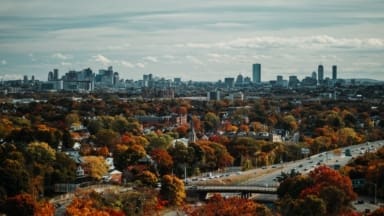
Urban forests provide vital ecosystem services important for regulating climate, conserving biodiversity, and well-being such as improved air quality and access to green space. In recent years, increasing numbers of cities have been planting more trees as part of their efforts to mitigate climate change and reduce the urban heat island effect.
To compare the characteristics of the urban forest, a new study was conducted on tree species found in residential gardens, public parks, and nearby native landscapes in and around six cities representing different climatic zones across the United States: Baltimore, Boston, Los Angeles, Miami, Minneapolis-St. Paul, and Phoenix. The researchers looked at species composition and two externally sourced traits (drought tolerance and water-use capacity) of tree and shrub species. As expected, these forests vary greatly in composition and physiological traits, complicating any assessment as to the functioning and benefits of urban forests.
Compared to natural forests, urban forests had markedly higher tree and shrub species richness, were composed mostly of non-native species, and included more species with low drought tolerance. According to the researchers, the divergence between natural and human-managed areas was most dramatic in arid climates. The driest cities, Phoenix and Los Angeles, had a lot of drought-tolerant species in parks and natural areas. However, even in dry cities, residential gardens still included a high number of thirsty species, for preferences of certain species and traits, such as blossom, autumn display etc.
The findings suggest that even though residential gardens make a major contribution to tree biodiversity in the urban forest, researchers are less certain if that translates into greater ecosystem services or climate change resilience. The findings show a degree of homogenisation of the urban forests across the different cities more similar to each other, than to nearby native landscapes. For example, in the northern cities of Baltimore, Boston, and Minneapolis-St Paul, approximately 50% of tree species in residential gardens were native, whereas in the southern cities of Los Angeles, Miami, and Phoenix, that was less than 25%. The findings suggest that due to increasing urbanisation, the ecosystems in hot and wet cities may be particularly vulnerable.
Source: Mejía G.A. et al. How do urban trees vary across the US? It depends on where and how you look. Frontiers in Ecology and the Environment 2024.

